 April
27
April
27
Tags
Petty Girl: The Ideal Male Fantasy of a Woman
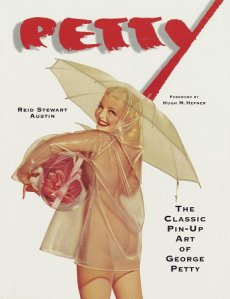 On the 27th of April 1894, the American graphic artist George Petty was born in Abbeville, Louisiana. He is mostly remembered for creating the Petty Girl, one of America’s favourite and most popular pinups, which was used frequently in advertisements, calendars, magazine centrefolds, posters, and most importantly, as an element of building soldiers’ morale during wartime. The characteristic features of a typical Petty Girl were her unnaturally long legs and her head being relatively smaller in relation to the rest of the body. One of the most recognisable images of a Petty Girl is probably the one used as the ‘nose art’ on the famous WWII B-17 Flying Fortress, Memphis Belle.
On the 27th of April 1894, the American graphic artist George Petty was born in Abbeville, Louisiana. He is mostly remembered for creating the Petty Girl, one of America’s favourite and most popular pinups, which was used frequently in advertisements, calendars, magazine centrefolds, posters, and most importantly, as an element of building soldiers’ morale during wartime. The characteristic features of a typical Petty Girl were her unnaturally long legs and her head being relatively smaller in relation to the rest of the body. One of the most recognisable images of a Petty Girl is probably the one used as the ‘nose art’ on the famous WWII B-17 Flying Fortress, Memphis Belle.
Petty’s career as a graphic artist began in 1933 working on the men’s magazine Esquire. His famous images, as well as the magazine’s mission, corresponded in a way with the socio-cultural changes brought on by the Great Depression. “Surely not by coincidence, social commentators rapidly developed a discourse that highlighted diminished male self-esteem as an outgrowth of the Depression. Pundits of Eleanor Roosevelt’s stature argued that losing one’s job, whether real or feared, and the possibility of seeing one’s wife forced to become a breadwinner was resulting in a dislocating loss of masculine self-respect (Roosevelt 1933, 20). The opportunity seized by Esquire was recognizing that this multivalent “loss” could be refigured into the site of a marketable new male identity. Key to such sleight of hand was the notion of “leisure,” a buzzword among Roosevelt braintrusters who hoped that commodifying the free time attendant on a reduced work week  would lead to more consumer spending.” (Kenon Breazeale, In Spite of Women: “Esquire” Magazine and the Construction of the Male Consumer, Signs, Vol. 20, No. 1, Autumn, 1994). Thus, Petty’s images were used for the purposes of attracting male audiences, stimulating their consumerist desires, and reshaping social consciousness and its perception of traditional gender relations. From now on consumerism was no longer a phenomenon ascribed exclusively to women. Moreover, Esquire suggested that men were finally getting hold of something they were unjustly deprived of – it was a chance for a leisurely break with a magazine addressed specifically to them: “It is our belief, in offering Esquire to the American male, that we are only getting around at last to a job that should have been done a long time ago-that of giving the masculine reader a break. The general magazines, in the mad scramble to increase the woman readership that seems to be so highly prized by national advertisers, have bent over backwards in catering to the special interests and tastes of the feminine audience. This has reached the point where the male reader is made to feel like an intruder on gynaecic mysteries” (Esquire 1933, 4).
would lead to more consumer spending.” (Kenon Breazeale, In Spite of Women: “Esquire” Magazine and the Construction of the Male Consumer, Signs, Vol. 20, No. 1, Autumn, 1994). Thus, Petty’s images were used for the purposes of attracting male audiences, stimulating their consumerist desires, and reshaping social consciousness and its perception of traditional gender relations. From now on consumerism was no longer a phenomenon ascribed exclusively to women. Moreover, Esquire suggested that men were finally getting hold of something they were unjustly deprived of – it was a chance for a leisurely break with a magazine addressed specifically to them: “It is our belief, in offering Esquire to the American male, that we are only getting around at last to a job that should have been done a long time ago-that of giving the masculine reader a break. The general magazines, in the mad scramble to increase the woman readership that seems to be so highly prized by national advertisers, have bent over backwards in catering to the special interests and tastes of the feminine audience. This has reached the point where the male reader is made to feel like an intruder on gynaecic mysteries” (Esquire 1933, 4).
The illustrations of Petty Girls in Esquire were highly eroticised – the girls dressed in provocative lingerie were usually talking on the phone to an unidentified person, expressing sexual puns of double meaning, such as for example: “Pick me up – How about you?” or “Well, we could go to the opera, Mr. Hammond, if you insist on preliminaries.” “In Esquire, the person she is talking to on the phone is usually suggested by the captions as a friend or lover (or sometimes as a friend who hears her confessions about a male friend or lover), and the puns of the text create an identifiable sexual setting. The captions may appear from “her” point of view or as something an assumed male voice is saying about her. Petty himself never supplied these captions; they were created by the magazine editors (often as a bet), and they produce a secondary plane of meaning that is age-, class-, race-, and gender-specific.” (Linda Williams, Porn Studies)
 In 1941, Petty, despite his popularity, left Esquire and was soon replaced by another graphic artist named Alberto Vargas. Vargas’ pinups bore a slightly different look, which caused a stir among Esquire readers. There appeared to be differing opinions between males and females. For example, a Mr. Langston claimed that: “We (the readers) have missed the shapely Petty Girl, but her absence is not nearly so disappointing as your giving us a substitute such as this one. She is good, yes, and shapely too, but she is not what we have been wanting – and getting. …Miss Varga looks far more hardened and callous than the inviting, yet more reserved, Betty Petty. …The Varga Girl is desirable in her own sort of way, but she, unlike Papa Petty’s creation, is not as likely to be taken out in public. Women’s beauty is – and should be – judged from the standpoint of that which would make her desirable to men. We want a female who is a lady in the daytime and a woman at night. …[Petty’s] women have their emphasis in such a manner as to make one take them in the belief that such women really exist – and they do.” (Elena Buszek, Pin-Up Grrrls: Feminism, Sexuality, Popular Culture). Mr. Langston’s opinion was met with criticism from some female readers, such as “A.K.V.” of Dallas, stating that: “My colleagues (female) and myself have decided that a Varga girl (if such could breath) would be at least understandable, while a Petty wench is something you view with lifted eyebrow and censor your thoughts. …[Langston’s comment,] ‘we want a female who is a lady in the daytime and a woman at night.’ simply slayed [sic] me, as I did not know there was such a vast chasm between night and day.” (Buszek)
In 1941, Petty, despite his popularity, left Esquire and was soon replaced by another graphic artist named Alberto Vargas. Vargas’ pinups bore a slightly different look, which caused a stir among Esquire readers. There appeared to be differing opinions between males and females. For example, a Mr. Langston claimed that: “We (the readers) have missed the shapely Petty Girl, but her absence is not nearly so disappointing as your giving us a substitute such as this one. She is good, yes, and shapely too, but she is not what we have been wanting – and getting. …Miss Varga looks far more hardened and callous than the inviting, yet more reserved, Betty Petty. …The Varga Girl is desirable in her own sort of way, but she, unlike Papa Petty’s creation, is not as likely to be taken out in public. Women’s beauty is – and should be – judged from the standpoint of that which would make her desirable to men. We want a female who is a lady in the daytime and a woman at night. …[Petty’s] women have their emphasis in such a manner as to make one take them in the belief that such women really exist – and they do.” (Elena Buszek, Pin-Up Grrrls: Feminism, Sexuality, Popular Culture). Mr. Langston’s opinion was met with criticism from some female readers, such as “A.K.V.” of Dallas, stating that: “My colleagues (female) and myself have decided that a Varga girl (if such could breath) would be at least understandable, while a Petty wench is something you view with lifted eyebrow and censor your thoughts. …[Langston’s comment,] ‘we want a female who is a lady in the daytime and a woman at night.’ simply slayed [sic] me, as I did not know there was such a vast chasm between night and day.” (Buszek)
These comments are rather interesting as they show a visible change in men’s attitude both towards women as well as their own position as newly identified group of consumers. Given the right to express openly their consumerist desires they commodified the image of the modern woman and probably influenced it to a certain extent. After all, from the comment of the female reader we learn that women did not oppose the highly eroticised and objectified perception of their sex as such, but merely one of its variations. Was it dictated by their growing feminist liberalism or rather by their need to compete for male attention? If the latter was the case, then they simply set themselves to compete against sheer male fantasies.
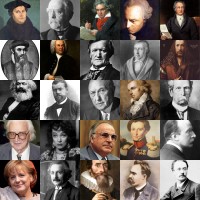


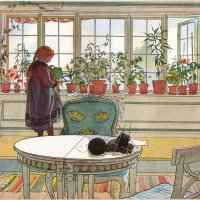
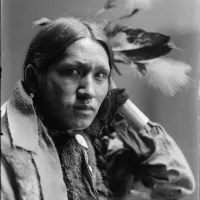
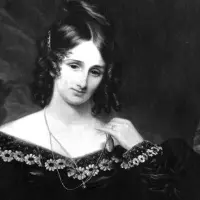
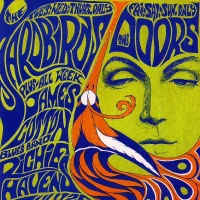
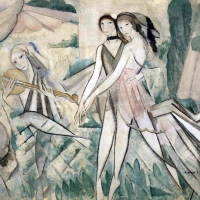


Fantastic article. Thank you so much. These classic artists are amazing. I’m partial to Elvgren, but they all do amazing work. I think modern pinups are too trashy… the suggestiveness of this era is wonderful and the artistic skills are fantastic.
LikeLike
Thanks Jim!
LikeLike
Very nice a narrative.
My sincere thanks for following my blog. I too am following yours.
LikeLike
Interesting article.
LikeLike
Interesting article
LikeLike
Wow, very interesting!
LikeLike
DIVIIIIIINE! It is so, so rare that I find a blog as meatily delish as yours! I will definitely subscribe! Thank you for following me #bigsmile
LikeLike
Welcome on board, Lisa! 😉
LikeLike
As a teenager during WW2, I remember the Petty Girls very well. Even though I’m female, I appreciated the humor. There used to be a Springmaid Sheet ads that were also risque at that time. There was always a beautiful girl and such captions as “We love to catch them on a Springmaid Sheet,” or one featuring a male native American, saying, “A buck well spent on a Springmaid Sheet.” That would never be accepted, and rightfully so, in today’s ads. Yes, Petty Girls bring back a lot of memories.
LikeLike
I think it’s fair to say the women posing for a predominantly male audience, such as the pin up girls whose images motivate men as they go off on bombing raids, or work in factories or garages (to remind the men who they are working/ sacrificing their lives for) tend to display far more human qualities (smiling, happy, twinkling eyes, friendly demeanour etc) when compared to the images of women consumed BY women in fashion and lifestyle magazines which invariably show women with blank expressions, devoid of any natural context and generally looking like robots/ zombies / cadavers with too much make up on.
> women did not oppose the highly eroticised and objectified perception of their sex as such
What is ‘sexual objectification’?
The more a person’s sexuality, sexual allure, sexual value is emphasised the LESS like an object they are perceived to be, surely?
To sexualise a person (or indeed an object) is to imbue it with HUMAN qualities. Sex, sexual desire and sexual expression are all associated with being ALIVE. Objects are not alive, nor do they have a sexuality.
Feminists have taken the concept of ‘subject/ object’ (viewer and viewed) and then misinterpreted the ‘object’ part to mean a literal object (a ‘thing’). That is not what is meant by subject/ object. The phrase ‘she is the object of my desires’ does not mean you are literally desiring an object.
The very process of defining women as ‘sexual objects’ rather than ‘sexual beings’ (sexual people) is ITSELF the objectification of women. Feminists strip women of their agency every time they define women as ‘sexualised objects’ or ‘objectified women’. The truth is a woman emphasising her sexuality walking down the street, or posing for photographs, is engaged in active behaviour. She is actually doing something which requires – and is an expression of – AGENCY.
To define women as ‘sexualised’ or ‘objectified’ is to strip her of agency,and give it all to men as the viewer (but never a female viewer, you’ll notice). But who is reallyplaying the active and passive roles when a woman spends 4 hours shopping for an outfit, and then 2 hours getting made up and then she goes out in public and struts past some guy who cannot help but feel sexually attracted to her? Feminists would say the man is playing the active role, and she is the passive victim. Did the man control the 6 hours it took her to make herself so sexually alluring?
To define women as ‘sexually objectified’ by men is to define women as ‘acted upon’ objects, controlled by men. Thus feminists reduce women to the status of objects (dolls) or at the very least oversized helpless children (rather than sexually mature adults with agency). The result is women are trained to feel helpless, powerless, resentful and angry. But laking any sense of agency (because feminism has told them they have no agency and that women are ‘acted upon’ victims) they end up making demands on men to act as their paternalistic providers and protectors …….. “he for she”. Which only disempowers women even more.
> Was it dictated by their growing feminist liberalism or rather by their need to compete for male attention?
Feminism IS (and always has been) about women competing for male attention, and male resources, and male protection, and special treatment and special privileges (he for she).
Normal women have also competed throughout history for male attention, male resources etc but normal women always offered something back to men in return. Gratitude, sex, companionship, a home, children, division of labour etc. This is all as it should be. Men and women providing for each other’s needs and wants in a partnership. Men and women are naturally complimentary to each other! Feminists definemen and women as monolithic waring tribes. This has never been the case … at least until our current post feminist society.
Feminists are like traditional women but on steroids…. they compete for male attention and male resources too… but they do it by acting like damsels in distress and by shaming men for not treating women like objects (precious vases). Feminism is the ultimate example of competing for male attention. Go and watch Emma Watson’s UN speech to see a modern 21st century woman dressed in white, bat her eyelashes at men, and speak in a trembly voice and generally act like a weak, puny, neotenous little girl in order to provoke men’s hard wired protective instincts towards women and children. The only thing she did not do was feint.
> If the latter was the case, then they simply set themselves to compete against sheer male fantasies.
To want to make oneself attractive and desirable to the opposite sex is perfectly hnatural (when not taken to extremes). The main motivation for men to get a decent education and work themselves half to death to climb the career ladder and get a decent income, house, car, social status is….. to make themselves attractive and desirable to women, so a nice woman will want to have a relationship with him.
LikeLike